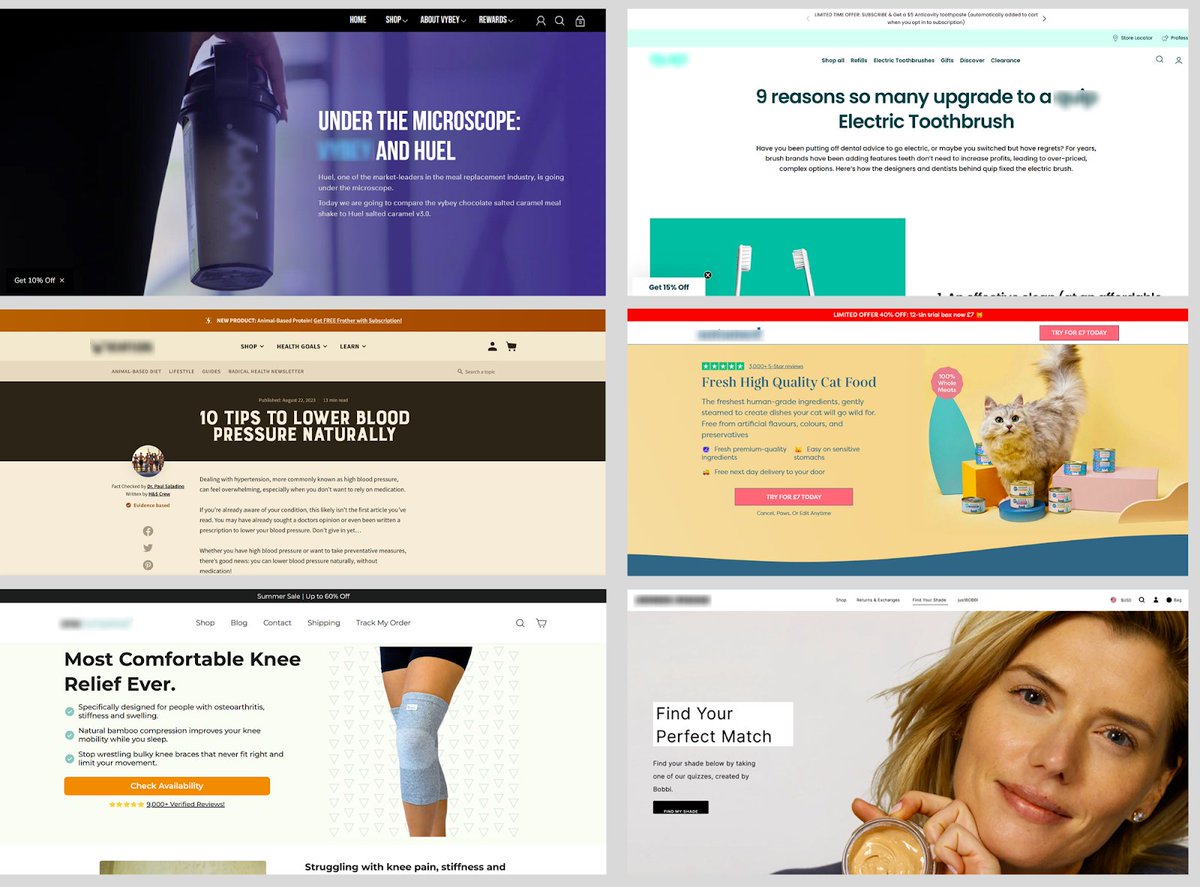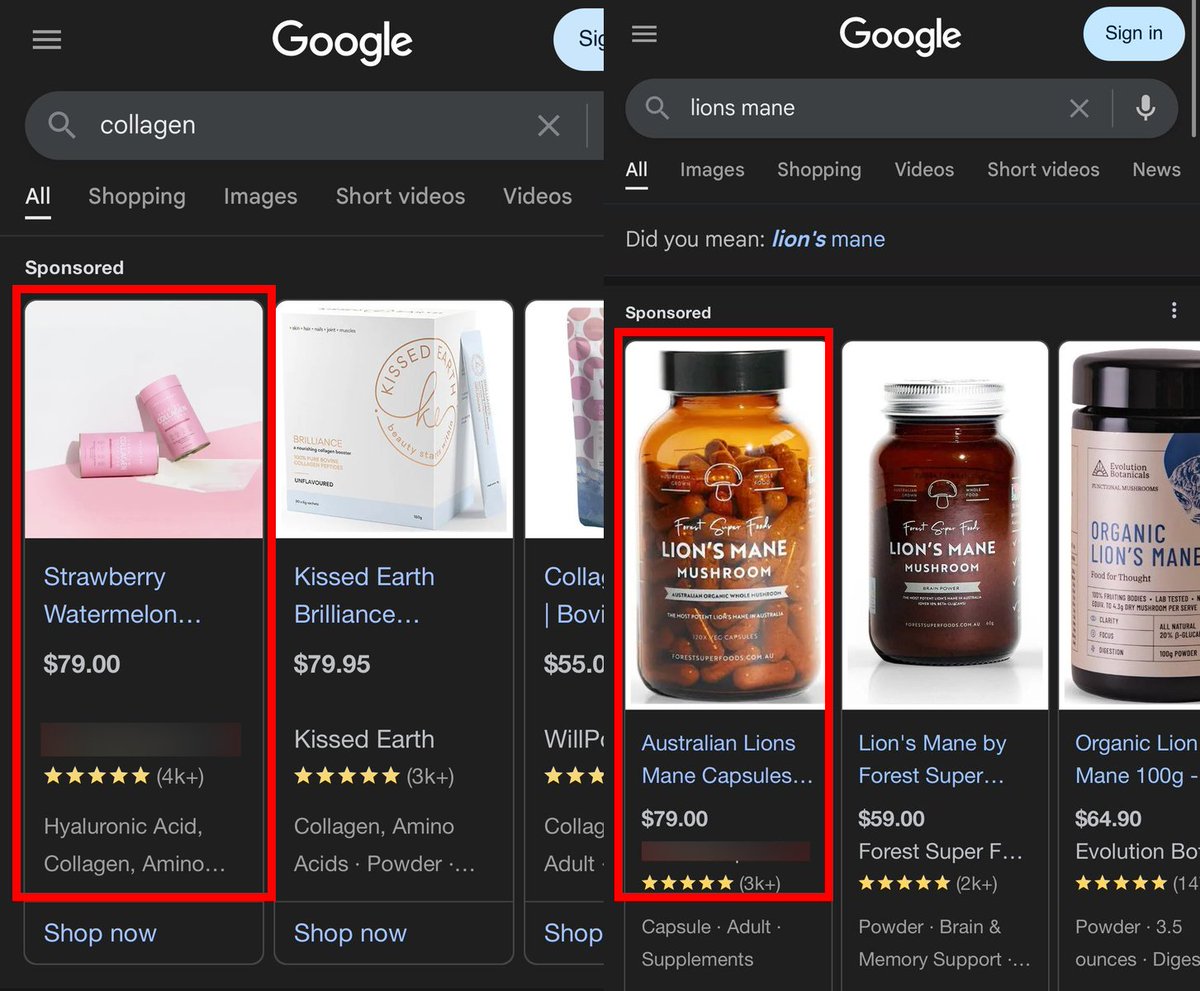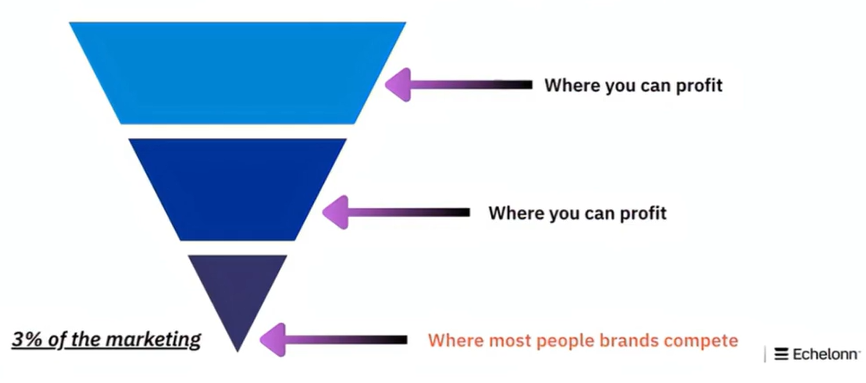Every product has 3-5 different customer segments.
Most brands only sell to 1.
We run a simple process to help clients identify the others and turn each into new revenue.
Here’s a step-by-step breakdown of how it works:
Most brands only sell to 1.
We run a simple process to help clients identify the others and turn each into new revenue.
Here’s a step-by-step breakdown of how it works:

Too many brands focus on milking the same buyers for their products.
It can work, but there’s a limit to how far you can go.
Meanwhile, there’s likely another market right beside you that would buy the same products.
When you crack it open, it can unlock serious revenue.
It can work, but there’s a limit to how far you can go.
Meanwhile, there’s likely another market right beside you that would buy the same products.
When you crack it open, it can unlock serious revenue.
Take a small brand we work with.
They’d been selling resistance bands for over a year, but growth had flatlined.
The moment we found a new angle, a stream of revenue instantly opened up.
Let me break down the process we used
They’d been selling resistance bands for over a year, but growth had flatlined.
The moment we found a new angle, a stream of revenue instantly opened up.
Let me break down the process we used
1. Spot untapped angles
Most of the time, you already have potential angles in your head.
Ask yourself: “Who else could this product help?”
That one simple question often sparks some great insights.
If you draw a blank, try the next approach.
Most of the time, you already have potential angles in your head.
Ask yourself: “Who else could this product help?”
That one simple question often sparks some great insights.
If you draw a blank, try the next approach.
Another goldmine for inspiration is customer reviews and search term data.
You might find people use your product in ways you never intended.
The best part is, that insight comes straight from the market.
If one person uses it that way, chances are, many others do too.
You might find people use your product in ways you never intended.
The best part is, that insight comes straight from the market.
If one person uses it that way, chances are, many others do too.
Another option is to use AI.
Ask ChatGPT, “Give me 10 new audiences that could use [product]. Rank them by novelty and potential.”
I put this last because AI ideas don’t always line up with real market demand.
They’re useful for brainstorming, but they always need validation.
Ask ChatGPT, “Give me 10 new audiences that could use [product]. Rank them by novelty and potential.”
I put this last because AI ideas don’t always line up with real market demand.
They’re useful for brainstorming, but they always need validation.
2. Research
Once you have an idea, take the time to confirm it’s worth testing.
- Look into search data
- Check forums and communities
- See how people talk about it on social media
These will give you a clear sense of whether demand is real.
Once you have an idea, take the time to confirm it’s worth testing.
- Look into search data
- Check forums and communities
- See how people talk about it on social media
These will give you a clear sense of whether demand is real.
For the resistance band brand, we looked at the search data for “Pilates band.”
We noticed that search volume was climbing.
That was proof there was demand.
And now, we could reach a new customer segment that hadn’t bought before.
We noticed that search volume was climbing.
That was proof there was demand.
And now, we could reach a new customer segment that hadn’t bought before.
3. Test and validate
After you research the angle, it’s time to validate it.
Don’t spend weeks building the perfect funnels. Instead:
- Duplicate your product in Merchant Center
- Adjust the copy & product image for the new angle
- Launch a Shopping campaign around it
After you research the angle, it’s time to validate it.
Don’t spend weeks building the perfect funnels. Instead:
- Duplicate your product in Merchant Center
- Adjust the copy & product image for the new angle
- Launch a Shopping campaign around it
Even without a custom funnel, those tests will show you if the audience exists.
If sales start coming through, you’ve validated the concept.
From there, you can double down with a bigger strategy.
If sales start coming through, you’ve validated the concept.
From there, you can double down with a bigger strategy.
4. Build a dedicated strategy
The next step is to create a complete strategy around the new angle.
That usually means:
- Launching new campaigns around it (PMax, Search)
- Building a tailored landing page
- Optimizing the funnel (copy, messaging, design, etc)
The next step is to create a complete strategy around the new angle.
That usually means:
- Launching new campaigns around it (PMax, Search)
- Building a tailored landing page
- Optimizing the funnel (copy, messaging, design, etc)
This is where you turn an idea into a revenue driver.
Back to our Pilates example.
After we validated it, we launched two new campaigns and built a customized landing page.
In just 1.5 months, we doubled both spend and revenue for that angle.
Back to our Pilates example.
After we validated it, we launched two new campaigns and built a customized landing page.
In just 1.5 months, we doubled both spend and revenue for that angle.
5. Scale
Once you know the angle works, scale it
Follow the same principles you’d use in other campaigns.
Increase spend gradually and closely monitor performance data.
The more you test and optimize, the stronger your results.
Once you know the angle works, scale it
Follow the same principles you’d use in other campaigns.
Increase spend gradually and closely monitor performance data.
The more you test and optimize, the stronger your results.
6. Repeat the process
One angle is never the finish line.
Pilates worked for this brand, but the next angle could be yoga, rehab, or travel fitness.
Each new angle represents an audience pool waiting for you to tap into.
One angle is never the finish line.
Pilates worked for this brand, but the next angle could be yoga, rehab, or travel fitness.
Each new angle represents an audience pool waiting for you to tap into.
So that’s our full process for finding new angles and turning them into revenue.
Go through it again and see where you can apply it to your account.
And if you need our direct help to implement this and scale your Google Ads, my DMs are open.
Go through it again and see where you can apply it to your account.
And if you need our direct help to implement this and scale your Google Ads, my DMs are open.
We put together a swipe file of the best-performing LPs for Google Ads right now
These are the same pages we’ve used to cut CPA by 2-3x across multiple accounts
Get the guide:
resources.echelonn.io/most-profitabl…
These are the same pages we’ve used to cut CPA by 2-3x across multiple accounts
Get the guide:
resources.echelonn.io/most-profitabl…
• • •
Missing some Tweet in this thread? You can try to
force a refresh










